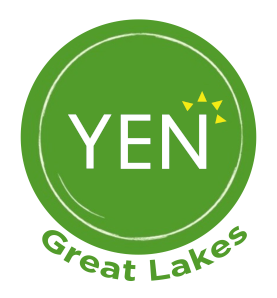FAQs
When will applications be accepted?
The registration survey will be posted on social media and this website on the ‘How To Participate’ page when registration opens in the Fall.
How do I apply?
Registration is now closed for the 2024 Great Lakes YEN program. Registration for the 2025 program will open in early December, 2024 so stay tuned to our ‘How To Participate’ page on this website and follow us on social media for updates. Space is limited, so get your application in early to have a better chance of participating.
What are the criteria for selection?
- Participants must carry out the YEN protocol and submit the required data.
- Participants will be selected in order to represent a varied geography across Ontario and the Great Lakes region of the USA, as well as diverse soil types.
- Participants must be willing to share and learn more about their wheat crop.
- Participants must be able to help collect and share critical agronomic data including, but not limited to: seeding information, crop inputs, harvest date, and more.
- Participants must be able to collect one soil sample in the spring, tissue samples at GS31 and GS39 and a grab sample of 100 shoots at maturity. They must submit a grain sample for analysis and have the ability to weigh off harvested area with a third-party verifier. Yield monitor data is not acceptable.
- There are limited spaces available, so applicants who meet requirements will be selected on a first come, first served basis.
- Only those completing the data submission will qualify for analysis.
Is there a cost?
Yes. Each participant will pay $300 to the program for entry of a single field site for a single growing season. This fee allows us to offset part of the lab sample costs for soil sampling, 2x tissue testing, grain sample analysis for nutrients and quality, and attendance to our year-end networking event. The Great Lakes YEN will be seeking sponsors to offset additional costs.
Payment will be due upon confirmation of participation in the Great Lakes YEN.
What are the categories of recognition for participation?
Recognition will be given to the top three growers within the program for percent of yield potential achieved and the highest yield achieved.
A regional networking event will be held to hand out awards, discuss the previous crop year and talk about what was learned with farmers, agronomists, researchers and extension specialists.
How will you be verifying the results?
What do the winners receive?
- Bragging rights!
- Public recognition of their accomplishment.
- A Great Lakes YEN award.
How is this different from other yield competitions?
- This project goes above and beyond the scope of yield alone.
- This network is about achieving the highest yield from your farm’s potential in a percentage rather than raw yield. It is about efficiencies and maximization of ability.
- This project will provide an in-depth review of all the components of yield.
- A project report will be generated for each field, which will provide much more information than a simple yield competition.
What is potential yield and how is potential yield calculated?
We are able to model the crop’s yield potential for each participant in a program year by looking at the plant’s development stages, recording the basic resources (light, temperature, and water) available, and calculate the crop’s success in capturing these resources.
Do I have to enter my best yielding field, or can I enter one of my challenging fields?
What has YEN data shown in other areas of the world?
- YEN projects span several countries and many crops, including wheat, oats, edible beans, and potatoes.
- Some learnings from recent UK wheat YEN projects are:
- 15 tonnes per hectare is possible almost anywhere in the U.K.
- It’s less about what you spend, more about attention to detail.
- Large yields come from large crops (able to capture more sunlight and water).
- Taller crops with higher straw nitrogen percentage tended to have higher yield.
- Good nutrition, control of disease and reducing lodging risks are all important.
- For more information on the global YEN, please visit https://www.yen.adas.co.uk/.
